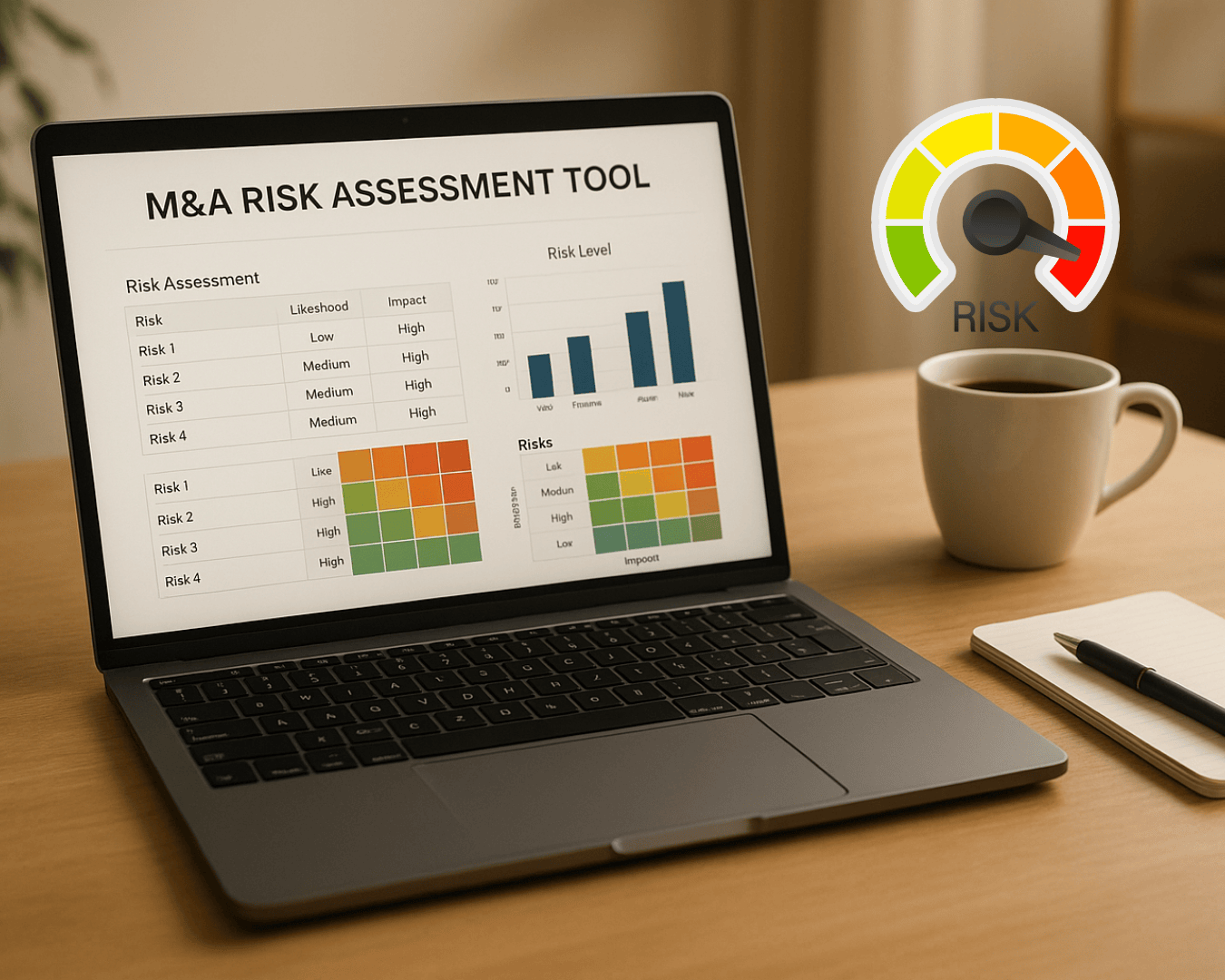7. Days Payable Outstanding (DPO)
Definition and Formula
Days Payable Outstanding (DPO) measures the average number of days a business takes to pay its suppliers after receiving an invoice. It's a critical indicator of how well a company manages its payables, balancing cash flow optimization with maintaining healthy supplier relationships. DPO is also a key part of the Cash Conversion Cycle (CCC), alongside Days Sales Outstanding (DSO) and Days Inventory Outstanding (DIO).
Here’s the formula for calculating DPO:
DPO = (Accounts Payable ÷ Cost of Goods Sold) × Number of Days
For example, if a company has $120,000 in accounts payable and annual COGS of $1,200,000, the calculation for a 365-day year would be:
($120,000 ÷ $1,200,000) × 365 = 36.5 days.
To ensure accuracy, it’s best to use the average accounts payable balance (calculated as the sum of beginning and ending balances divided by two).
A higher DPO can help a business retain cash longer and improve liquidity. However, a lower DPO might reflect quicker payments, which can strengthen vendor relationships but reduce the cash available for operations.
Typical Benchmark Range
The ideal DPO range varies significantly by industry. For small and medium-sized businesses in the U.S., typical ranges include:
- 20 to 45 days: Common for technology and service companies, which generally deal with fewer physical goods.
- 30 to 60 days: Seen in retail, where businesses must balance supplier relationships with cash flow needs.
- 45 to 75 days: Typical for manufacturing and wholesale sectors, which handle larger purchase volumes and often follow established industry norms.
Research from The Hackett Group indicates that world-class companies can maintain a DPO that is 20–30% higher than their industry median without harming supplier relationships. For instance, a business might achieve a DPO of 60 days in an industry where the median is 45 days. Companies with effective DPO strategies can improve their cash flow by as much as 20% compared to those with weaker practices.
Impact on Working Capital Efficiency
A higher DPO can free up cash for other operational needs, but delaying payments too much can strain supplier relationships or lead to missed early payment discounts. For instance, increasing DPO from 30 to 45 days can significantly enhance liquidity, but it requires careful management to avoid negative consequences.
Striking the right balance is key. A DPO that’s too high may disrupt supplier relationships or supply chains, while a DPO that’s too low might mean the business isn’t fully utilizing available credit terms, which could unnecessarily tighten cash flow.
Use Cases and Industry Relevance
DPO plays a particularly important role in industries with tight margins or complex supply chains:
- Manufacturing companies often maintain longer DPO periods due to high purchase volumes and established supplier agreements.
- Retail businesses typically operate with shorter DPO periods but depend heavily on reliable supplier relationships to manage fast-moving inventory.
- Technology and service companies can optimize DPO by negotiating better terms for essential tools and services, as they generally purchase fewer physical goods.
To optimize DPO, businesses can explore strategies like negotiating longer payment terms, consolidating purchases to strengthen bargaining power, and leveraging digital payment platforms for precise timing. Properly managing DPO not only boosts liquidity but also signals strong financial management to lenders and investors.
In the next section, we’ll dive into another key metric that completes the picture of working capital efficiency.
sbb-itb-a3ef7c1
8. Inventory to Working Capital Ratio
Definition and Formula
The Inventory to Working Capital Ratio shows how much of a company’s working capital is tied up in inventory. This metric is crucial for understanding how liquid resources are allocated, particularly in unsold goods, which can directly impact cash flow and overall financial flexibility. A high ratio indicates that a significant portion of capital is locked in inventory, while a low ratio may point to more efficient management - or even risks of stock shortages.
Here’s the formula to calculate it:
Inventory to Working Capital Ratio = (Inventory ÷ Working Capital) × 100
For example, if a company has $80,000 worth of inventory and $200,000 in working capital:
($80,000 ÷ $200,000) × 100 = 40%
This means 40% of the company’s working capital is tied up in inventory. However, if working capital is very low or negative, the ratio can become distorted or even negative, so it’s important to evaluate it alongside other financial metrics. This ratio complements other working capital indicators by focusing on how inventory affects liquidity.
Typical Benchmark Range
The "ideal" ratio varies widely depending on the industry, as different sectors have unique inventory needs:
- Retail businesses: Often range between 50% and 80%, reflecting their need for large inventories to meet demand and seasonal trends.
- Manufacturing companies: Typically fall between 30% and 60%, balancing raw materials, work-in-progress, and finished goods.
- Service companies: Usually operate below 20%, as they don’t rely heavily on physical inventory.
- Technology companies: Tend to maintain ratios under 25%, focusing more on intellectual property and workforce investments.
Ratios above 70% could suggest excessive capital is stuck in inventory, potentially limiting flexibility for growth or market adaptations. On the other hand, ratios below 20% in inventory-heavy industries might indicate insufficient stock, risking lost sales and customer dissatisfaction.
Impact on Working Capital Efficiency
This ratio offers unique insights by revealing how inventory competes with other demands on liquid capital. Excess inventory can tie up cash, reduce operational flexibility, and increase costs like storage, insurance, and depreciation.
Optimizing the ratio can lead to significant cash flow improvements. For instance, if a company with $500,000 in working capital reduces its ratio from 60% to 45%, it frees up $75,000 - funds that could be redirected toward marketing, upgrades, or emergency reserves.
However, driving the ratio too low can create a different set of problems. Insufficient inventory often results in stockouts, unhappy customers, and lost revenue. The goal is to find the balance - a level that supports sales without unnecessarily tying up resources.
Use Cases and Industry Relevance
The ratio’s relevance depends on the business model and industry:
- Seasonal retailers face fluctuating ratios throughout the year. During peak seasons, their ratios might spike to 80% or higher, but they should aim to bring this down during slower periods through sales and inventory clearance strategies.
- Manufacturers can improve their ratios by adopting just-in-time inventory systems, refining demand forecasts, and strengthening supplier relationships to reduce safety stock. The focus is often on minimizing raw material inventory while maintaining enough finished goods to meet demand.
- E-commerce companies often leverage dropshipping, third-party logistics, and sophisticated demand forecasting to keep ratios low while ensuring product availability for customers.
- Growing businesses need to watch this ratio closely during periods of rapid expansion. Growth often leads to inventory buildup, which can strain working capital. Early adoption of inventory management systems can help maintain healthy ratios as the business scales.
9. Working Capital Turnover
Definition and Formula
Working Capital Turnover measures how effectively a business uses its working capital to generate sales. Essentially, it tells you how many dollars in sales are created for every dollar of working capital invested. A higher ratio usually points to efficient operations and solid cash flow management.
Here’s the formula:
Working Capital Turnover = Net Sales ÷ Average Working Capital
Let’s break it down with an example. If a company has annual net sales of $1,200,000 and an average working capital of $300,000, the calculation would look like this:
$1,200,000 ÷ $300,000 = 4.0
This means the company generates $4.00 in sales for every $1.00 of working capital. To figure out the average working capital, simply add the beginning and ending working capital for the period and divide by two.
Typical Benchmark Range
Working capital turnover benchmarks vary widely depending on the industry, as each sector has unique capital needs and business models:
- Grocery and retail chains: These businesses often see ratios between 8 and 15, thanks to high inventory turnover and prepayments from customers through gift cards and loyalty programs.
- Manufacturing companies: Their ratios generally range from 4 to 8, reflecting the need for higher working capital to manage raw materials, in-progress inventory, and finished goods.
- Professional services: These companies can reach ratios of 10 to 20 or even higher, as they typically operate with little to no inventory and collect payments quickly.
- Construction companies: Ratios here tend to fall between 3 and 6, due to longer project timelines and substantial material investments.
A ratio below 2.0 often signals inefficient use of working capital, while ratios above 15 might indicate the company is operating with dangerously low levels of working capital. The sweet spot lies in balancing sales generation with the ability to meet short-term financial obligations.
Impact on Working Capital Efficiency
This metric offers a direct view of how well a company is converting its working capital into revenue. A higher ratio brings several benefits, such as improved cash flow predictability, lower borrowing needs, and greater flexibility for growth initiatives.
For instance, increasing the ratio from 4.0 to 5.0 translates to 25% more sales per dollar of working capital, which can significantly enhance profit margins and return on investment. However, there’s a catch: pushing the ratio too high can backfire. Operating with minimal working capital can leave a company vulnerable during economic downturns, supply chain hiccups, or unexpected demand surges. Striking the right balance is critical - companies need to optimize their ratio while maintaining a financial buffer for unforeseen challenges.
Use Cases and Industry Applications
Different industries can apply this metric to fine-tune their operations and boost efficiency:
- Technology companies: By implementing automated billing systems and offering early payment discounts, they can shorten days sales outstanding, speeding up cash collection and reducing working capital needs.
- Retailers: Inventory optimization is key. Fast-fashion brands like Zara excel here by cutting design-to-shelf time and using advanced demand forecasting systems. This helps them maintain high turnover ratios without overstocking.
- Manufacturers: Supply chain improvements and just-in-time production methods can make a big difference. Strengthening supplier relationships and refining demand forecasts allow manufacturers to reduce raw material inventory without compromising productivity.
- Service-based companies: These businesses often achieve the highest ratios by focusing on faster project delivery and better payment terms. Consulting firms, for example, might require upfront payments or milestone-based billing to minimize working capital needs while maximizing revenue.
On the flip side, a declining working capital turnover ratio over several quarters can signal trouble. It may point to inefficiencies in accounts receivable collection, inventory management, or supplier payment terms - potentially flagging future cash flow challenges. Keeping an eye on this trend can serve as an early warning system for operational issues.
10. Net Cash Position
Definition and Formula
Net cash position is a vital metric when assessing a company's liquidity and overall financial health. It measures how well a business can meet its immediate liabilities using the cash it has on hand. Unlike net cash flow, which tracks changes in cash over a period, net cash position provides a snapshot of liquidity at a specific moment.
The formula to calculate net cash position is straightforward:
Net Cash Position = Cash and Cash Equivalents – Total Debt
This metric works alongside other liquidity indicators, offering a quick glimpse into financial stability. It helps determine whether a company has enough cash to comfortably cover its short-term obligations.
Create Liquidity KPI Dashboard with Industry Benchmarks
KPI Comparison Table
This table brings together the ten key working capital efficiency KPIs, highlighting patterns and areas that may need attention. It summarizes each KPI's purpose, formula, and its role in operations, offering a clear snapshot of their significance.
| KPI | Formula | What It Measures | Healthy Range | Operational Impact |
|---|---|---|---|---|
| Working Capital Ratio | Current Assets ÷ Current Liabilities | Overall liquidity buffer | 1.2 - 2.0 | Higher ratios show better short-term health, but overly high values could mean idle cash |
| Current Ratio | Current Assets ÷ Current Liabilities | Ability to cover short-term debts | 1.5 - 3.0 | Indicates capacity to meet immediate obligations; very high ratios may suggest inefficient asset use |
| Quick Ratio | (Current Assets - Inventory) ÷ Current Liabilities | Liquidity without relying on inventory | 1.0 - 1.5 | Assesses liquidity by excluding inventory, which can be harder to convert into cash |
| Cash Conversion Cycle | DSO + DIO - DPO | Time to turn investments into cash | 30-90 days | Shorter cycles mean quicker cash flow and better efficiency |
| Days Sales Outstanding (DSO) | (Accounts Receivable ÷ Revenue) × 365 | Average time to collect payments | 30-45 days | Lower DSO improves cash flow; higher values might indicate collection delays |
| Days Inventory Outstanding (DIO) | (Inventory ÷ Cost of Goods Sold) × 365 | Time inventory stays unsold | 30-60 days | Shorter durations cut storage costs and reduce the risk of obsolescence |
| Days Payable Outstanding (DPO) | (Accounts Payable ÷ Cost of Goods Sold) × 365 | Time taken to pay suppliers | 30-60 days | Longer periods help cash flow but could harm supplier relationships if overextended |
| Inventory to Working Capital Ratio | Inventory ÷ Working Capital | Portion of working capital tied to inventory | 0.2 - 0.5 (20-50%) | Higher ratios suggest excessive cash locked in unsold goods |
| Working Capital Turnover | Revenue ÷ Average Working Capital | How efficiently working capital is used | 4-8 times | Higher turnover reflects better use of working capital resources |
| Net Cash Position | Cash and Cash Equivalents - Total Debt | Actual liquidity status | Positive preferred | A positive position offers flexibility; a negative one requires close monitoring |
These KPIs collectively provide a comprehensive view of working capital efficiency, crucial for managing finances, supporting growth, and ensuring smooth operations. However, benchmarks can vary significantly depending on the industry. For instance, manufacturing businesses often deal with longer inventory cycles, while service-based companies typically operate with lower working capital needs.
Seasonal businesses should monitor these metrics more frequently - ideally monthly - to account for fluctuations. A retail company, for example, might experience a spike in inventory ratios before the holiday season. While this is expected, it’s important to differentiate between normal seasonal shifts and potential inefficiencies.
When reviewing these KPIs, pay attention to correlated trends. For instance, a rising DSO paired with a declining current ratio could point to customer payment delays that might strain liquidity. On the other hand, extending DPO without damaging supplier relationships can improve the cash conversion cycle and enhance operational cash flow.
Prioritize the KPIs that directly affect your cash flow and address any bottlenecks that might hinder your operations.
Conclusion
Keeping an eye on these ten working capital KPIs goes beyond crunching numbers - it lays the groundwork for steady growth and helps safeguard your business from unexpected challenges. Small and medium-sized businesses (SMBs) that regularly track these metrics gain the clarity needed to make smart decisions, minimize financial risks, and maintain a stable cash flow.
Good working capital management equips SMBs to handle economic downturns, capitalize on growth opportunities, and stay liquid. For example, one SMB managed to reduce its Days Sales Outstanding by 10 days simply by tightening credit policies and using automated payment reminders. This small adjustment unlocked much-needed cash for daily operations and cut down their reliance on costly short-term loans.
Consistency is key. Reviewing KPIs on a monthly or quarterly basis ensures that your metrics stay in sync with your business objectives. Plus, benchmarking your performance against industry standards can quickly highlight areas that need immediate action.
For SMBs looking to refine their working capital strategy, Clearly Acquired offers a range of solutions, including strategic funding, expert guidance, and AI-powered tools. Whether you're seeking growth capital, debt refinancing, or advice on boosting operational efficiency, the right resources can make all the difference. With the proper support, you can streamline improvements across all the KPIs discussed earlier.
FAQs
What are the key KPIs small and medium-sized businesses should track to improve working capital efficiency?
Small and medium-sized businesses (SMBs) can improve their working capital management by keeping a close eye on key performance indicators (KPIs) that shed light on cash flow, liquidity, and overall operations. Some of the most important KPIs to monitor include:
- Cash Conversion Cycle (CCC): This shows how quickly a company can turn its investments in inventory and other resources into cash from sales. A shorter cycle means quicker access to cash.
- Current Ratio: This measures whether your business has enough short-term assets to cover its short-term liabilities - a key indicator of financial health.
- Days Sales Outstanding (DSO): This tracks how many days, on average, it takes to collect payments from customers after a sale. Lower numbers indicate faster collections.
By keeping a regular check on these metrics, SMBs can spot cash flow issues early, streamline how they manage receivables and payables, and maintain enough liquidity to handle immediate financial needs. It’s a proactive way to make smarter financial decisions and build a more stable future.
How does the Cash Conversion Cycle (CCC) influence a company's growth and scalability?
The Cash Conversion Cycle (CCC) is a key indicator of how efficiently a company manages its cash flow, directly impacting its ability to grow and expand. When the CCC is shorter, it means the business is quickly converting inventory into cash. This fast turnaround not only boosts liquidity but also provides funds that can be reinvested into growth opportunities without relying heavily on external financing. It’s a win for both operational efficiency and financial flexibility.
On the flip side, a longer CCC can create challenges by locking up cash in inventory or unpaid receivables. This limits the resources available for growth and increases financial risk, particularly during periods of rapid expansion. By refining their CCC, businesses can improve cash flow, reduce their reliance on borrowing, and strengthen their position in competitive markets.































.png)








































%20Loan%20Application%20Checklist.png)





































